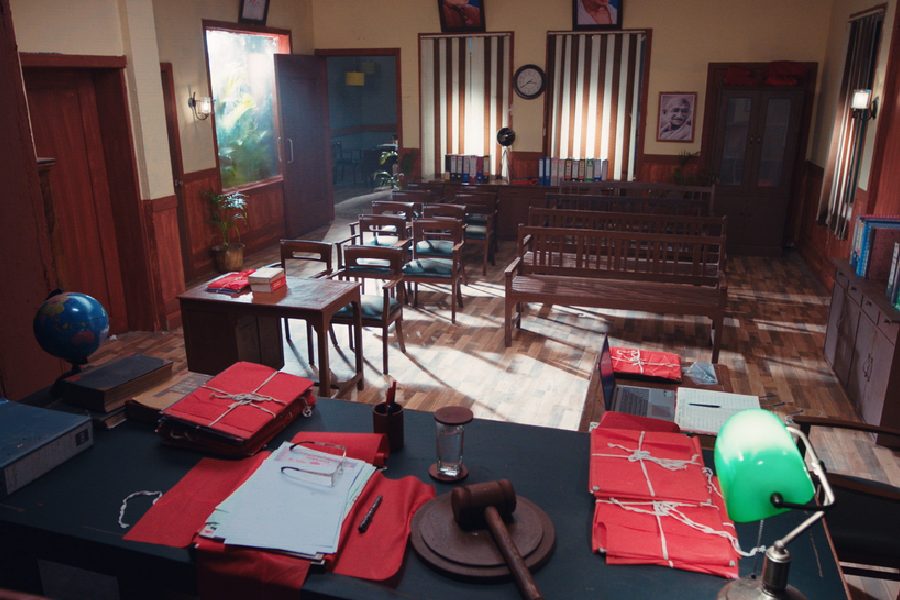 |
Bhubaneswar, Nov. 7: Barbara forest is perhaps the only forest patch in the country which is guarded by the jawans of the Central Reserve Police Force (CRPF).
This is not because of the Naxalite issue. They are there in order to keep the timber mafia at bay. However, the forest, with a rich history attached to its creation and naming, has more things to describe than what catches the sight of a traveller.
The beautiful Barbara forest dates back to some plantation activities carried out by the British forest officials in 1910. The original forest had a lot of sal vegetation along with other species such as Piasal, Ficus, Arjun, Ashoka and Kasi.
The teak plantations by the British administration were actually carried out in the valleys and foothills.
Therefore, even today, the slopes in the hills still hold the old natural forests, where sal is the predominant species. The teak trees of Barbara are unique as some are more than 80 feet high and 10 feet or more in circumference.
How did a forest in Orissa get a western name? Legend says a British forest official had lost his wife inside the forest range due to a tiger attack. It must have been named after her. Among its many attractions, a teak wood panelled forest rest house (FRH) made in 1912 by the British is still in good working condition.
The signage at the entrance of the bungalow tells you that the forest under Balugaon range comes under Khurda Division.
Wildlife activist and secretary Wildlife Society of Orissa, Biswajit Mohanty, says: “Giant squirrels are found in great numbers in the thick forests of Barbara, making it a major contender to become sanctuary for giant squirrels. While visiting the forest area one can notice the animals at their acrobatic best as they jump from one branch to another.
Even the rich avian fauna makes it a case to claim to be declared as a protected area. It should immediately be turned into a sanctuary.’’
The Barbara forests are also home to various species of birds. However, the main species are little scaly-bellied green woodpeckers, Himalyan tree pie, lesser golden backed woodpeckers, golden-backed woodpeckers, marahta woodpecker, Rufous woodpeckers, the long-tailed mini vet, the scarlet mini vet, white eye, three species of bulbuls, red spur fowl, chloropsis, magpie robin, iora, black-naped oriole, the black-headed oriole, the red jungle fowl, the jungle crow, the blossom-headed, rose ringed and Alexandrine parakeet, Indian pitta, Baya weaver bird, scarlet mini vet, the white-necked ground thrush, the emerald dove, jungle crow, paradise flycatchers, nightjars, jungle babbler, bay-backed shrike, Tickell’s flowerpecker, the black-winged kite and the spotted owlet.
“Local thieves constantly attacked the Barbara forest to steal timber. The problem reached its peak during the ’80s. The trend was controlled after CRPF jawans took charge. The timber mafia of Nayagarh and Daspallah were more active. The rapid urbanisation and housing activities in the state capital also worked as a catalyst as the teak trees were felled to supply timber to meet the demands,’’ Mohanty adds.
Taking the jungle route in Barbara requires good vehicles, probably a jeep or sports-utility vehicles, with four-wheel drive option. Though the drive is bit difficult, the ghat roads of Rajin Hills are beautiful.
The peak of the range is 2,500 feet above sea level and is very cool in summer days. Interestingly, there is a well on the top of the hill, which was dug in 1907 and thirsty travellers drank its fresh water during those days.
“Though Barbara was once historically famous for its tigers, now one can find sambar, deer, mouse deer and bison. However, apart from the drive, a walk in the deep forest also provides a beautiful experience to a true lover of wild habitat and animals,’’ Mohanty says.
A city-based wildlife photographer, who does not want to be named, said: “Perhaps during the British era the forest range was a favoured game reserve. Even when I was a kid and staying in Balugaon during the early ’60s, I have seen people from western countries come to Barbara to hunt. Of course, the Wildlife Protection Act was not in force then.’’
Pratap Chandra Panda, senior scientist, Taxonomy and Conservation Division of Regional Plant Resource Centre (RPRC), Bhubaneswar, feels: “Barbara is a unique area with many botanically interesting plants. It contains the Tamana Medicinal Plant Conservation Area (MCPA) where 375 medicinal plants, including 19 prioritised medicinal plants of conservation concern, were identified.’’
“While rare and endangered species of plants include nine types, there are two wild varieties of wild crop plants such as wild rice (Oryza granulata) and wild coffee (Coffea benghalensis). Also two plants — one from Orchidaceae family (pomatocalpa decipiens) and Rubiaceae family (Geophila repens) — are included as new species from the country. Also the orchid wealth of Tamana MCPA includes 12 varieties,’’ he adds.
“From a RPRC study it was found that a species named Lasiococca comberi is the only plant seen in two places, i.e. Barbara and Similipal and not anywhere in the world. Phylogenetic studies through molecular analysis told us which genetic distribution from these two places has maximum diversity. Likewise, it was known that the distribution in Barbara forests is the most diverse and the conservation programme should start at Tamana Range Forest,’’ the scientist informs.
Another senior forest department official said: “The first land tortoise was reported from Tamana in 1968 and the specimen (geochelone elegans) was sent for identification to the Zoological Survey of India.’’
Apart from the teak, sal forests and the historical links, Barbara still remains in the heart of the serious wildlife lovers, wildlife activists and forest experts as a virgin land for further exploration.
The Wildlife Wing of the State Forest Department has yet to document the entire area scientifically.
However, the streams, the dense forests and the ghat roads of Rajin Hill never get deleted from the memories of the traveller, who once had a visit and stayed in the historic teak wood-panelled rest house of 1912.










